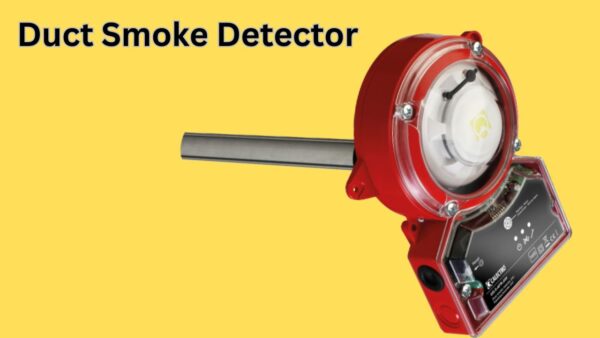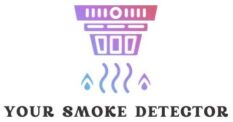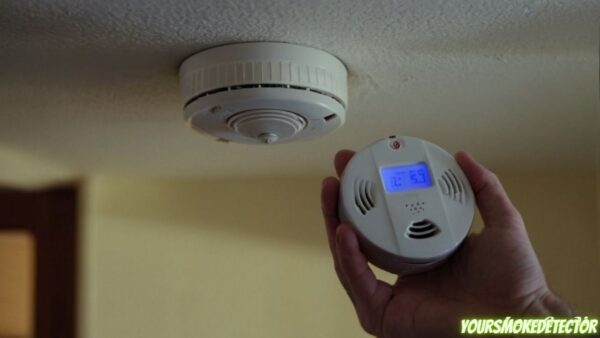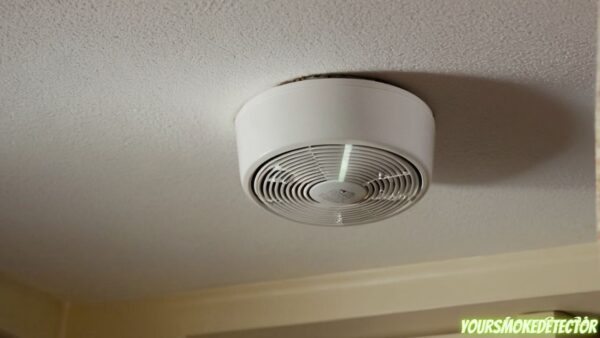Are you looking for a way to keep your home and family safe from unwanted fires?
Do you want the peace of mind that comes with having reliable smoke detectors in your home?
Then, the duct smoke detector is an excellent choice for you! This device provides 24/7 monitoring of air currents in your ducts or ventilation systems, alerting you immediately if it detects any signs of fire.
It is simple to install, cost-effective and gives off near-immediate warning signals allowing homeowners to take action quickly. Learn more about this life-saving invention and how it can be beneficial for keeping your loved ones protected.
Duct Smoke Detector
| Feature | Description |
|---|---|
| Detection Method | Photoelectric or Ionization sensing technology for effective smoke detection in duct systems. |
| Installation | Designed for easy installation in HVAC ducts, suitable for both new and existing systems. |
| Alarm Signaling | Provides audible and visual alarms upon smoke detection, ensuring prompt response. |
| Remote Monitoring | Capability for remote monitoring, allowing integration with building automation systems. |
| Sensitivity Adjustment | Adjustable sensitivity settings to accommodate varying environmental conditions. |
| Airflow Interlock | Integrated features to shut down HVAC systems in the event of smoke detection, preventing spread. |
| Diagnostic Functions | Self-diagnostic capabilities for regular system health checks and maintenance alerts. |
| Power Options | Options for both hardwired and battery power, ensuring continued functionality in power outages. |
| Compatibility | Compliant with relevant safety standards and compatible with various HVAC system types. |
| Tamper-Resistant Design | Secure design to prevent tampering or unauthorized interference with the detector. |
| Status Indicators | LED indicators for power, alarm, and system status, providing visual feedback at a glance. |
| Operating Temperature | Wide operating temperature range to ensure reliable performance in diverse environments. |
| Network Integration | Ability to integrate with fire alarm systems and communicate status to a central monitoring station. |
| Testing Mechanism | Convenient testing mechanism for regular checks of the detector’s functionality. |
1. What is a Duct Smoke Detector and Why Should You Have One

A duct smoke detector is a specialized device designed to detect smoke and potential fire hazards in heating, ventilation, and air conditioning (HVAC) ductwork in buildings.
These detectors are strategically placed in HVAC systems to identify any traces of smoke or fire particles in their earliest stages, significantly aiding in fire prevention.
The importance of having a duct smoke detector cannot be overstated. They serve as the first line of defense against potential fires, providing an early warning system that can save lives and prevent property losses.
By detecting irregularities in the airflow and giving off a warning signal, they allow ample time for occupants to evacuate the premises safely.
Moreover, duct smoke detectors contribute significantly to the maintenance of air quality within a building.
They are capable of shutting down the HVAC system during a fire, preventing the spread of smoke and harmful fumes throughout the building.
2. Different Types of Duct Smoke Detectors and their Benefits
Duct smoke detectors are designed with the overarching aim of detecting smoke or particulate matter within the ductwork of HVAC (Heating, Ventilation, and Air Conditioning) systems.
Depending on their specific features and technology, they are categorized into different types.
1. Ionization Duct Smoke Detectors:
These detectors work on the principle of ionization. They are most effective at detecting smaller particles, which are typically produced by flaming fires.
Benefit: Excellent at detecting fast-burning fires with smaller smoke particles.
2. Photoelectric Duct Smoke Detectors:
These detectors use light to detect smoke. When smoke enters the chamber, it disrupts the light beam, triggering the alarm.
Benefit: Ideal for detecting slow, smoldering fires with larger smoke particles.
3. Aspirating Smoke Detectors:
These detectors actively draw air through a network of pipes to a detection chamber, where it can identify the presence of smoke.
Benefit: Extremely sensitive and capable of detecting smoke before it’s visible to the human eye.
Each type of duct smoke detector has its unique benefits, and the selection often depends on the specific requirements of the building or system.
3. The Process of Installing a Duct Smoke Detector
The installation of a duct smoke detector involves a series of steps that must be followed meticulously to ensure effective operation.
Firstly, identify the optimal location for the detector by considering the air flow within the duct and the access for future inspections or maintenance.
Next, cut an appropriately sized hole in the duct to accommodate the detector, ensuring that it fits snugly.
Once the hole has been made, the detector can be inserted and secured in place using the fasteners provided with the device.
Following this, wire the detector to the power source and alarm system, taking care to follow the wiring diagram provided with your specific model.
After the wiring is complete, the detector should be thoroughly tested to confirm its functionality.
The installation is not complete until the detector is fully operational and able to trigger the alarm system when smoke is detected.
4. How to Test the Operation of Your Duct Smoke Detector
Testing your duct smoke detector is a straightforward procedure that ensures the safety of your environment.
Start by locating the test switch on your detector. It’s typically a small, red, or black button labeled ‘Test’. Push and hold this button for a couple of seconds to activate the test mode.
The detector should emit a loud alarm sound that confirms it’s working correctly. If you don’t hear an alarm, the detector may be malfunctioning and needs immediate attention.
Remember to reset the detector after testing to ensure it goes back to normal operation. This is usually done by pressing the ‘Reset’ button or turning the ‘Test’ button counterclockwise.
Regular testing is crucial for maintaining the functionality and effectiveness of your duct smoke detector.
5. Regular Maintenance Guidelines for Your Duct Smoke Detector
Maintaining your duct smoke detector is crucial for ensuring the safety of your property. Like any other safety equipment, it demands periodic attention to function optimally.
Here are some key guidelines to help you maintain your duct smoke detector efficiently:
Test your detector monthly:
It is vital to check if your detector is functioning properly. You can do this by pressing the test button on the device. If it emits a loud noise, it’s working fine.
Inspect and clean every six months:
Over time, dust and other particles can accumulate in the duct smoke detector, which may affect its operation. Make sure to open the device and gently clean the interior with a soft brush or compressed air.
Replace the batteries annually:
Even if your device is hardwired, it’s likely to have a backup battery. Ensure you replace it every year to keep the device operational during power outages.
Professional inspection:
Every couple of years, get a professional service technician to inspect and service your unit. They possess in-depth knowledge and can identify potential issues that may not be apparent to the untrained eye.
6. Troubleshooting Common Issues with Your Duct Smoke Detector
The duct smoke detector, an essential yet often overlooked component of your fire protection system, can exhibit a few common issues that require troubleshooting.
These problems, while frustrating, can typically be resolved with a basic understanding of the detector’s operation.
Issue 1: False Alarms
One of the most common issues you may face with your duct smoke detector is false alarms. Unexpected alarms can often be attributed to incorrect sensitivity settings or environmental factors such as dust or humidity.
If your unit is producing false alarms, consider adjusting its sensitivity or have it professionally cleaned.
Issue 2: No Power
If your duct smoke detector doesn’t power on, the most likely culprit is a power supply issue.
Check the connection points and wiring for any visible damage and ensure the unit is securely connected to the power source.
Issue 3: Trouble Signals
Trouble signals on your duct smoke detector usually indicate a system fault or maintenance requirement.
These can be triggered by a range of issues, from low battery power to a need for regular maintenance. Regularly inspect and service your detector to prevent such issues.
7. Benefits of Having a Working Duct Smoke Detector in Your Home
A working duct smoke detector is a vital component of a home’s safety system.
It plays a crucial role in early smoke detection, offering residents valuable time to evacuate in case of a fire outbreak.
Early detection can be the determining factor between a safe evacuation and a hazardous situation.
Moreover, these detectors not only detect smoke but can also identify particulates that may indicate a malfunctioning HVAC system.
By alerting homeowners to these issues, a duct smoke detector can prevent costly damages – an advantage that underscores its essential role in safeguarding both life and property.
Finally, a working duct smoke detector contributes to the overall air quality in your home.
Conclusion
Duct smoke detectors play a crucial role in maintaining safety standards within various types of buildings. Their primary function is to detect smoke and other particulates within HVAC ducts, which can be an early indication of a fire.
These detectors can trigger alarms, shut down the HVAC system, and activate fire suppression systems, thereby mitigating the spread of fire and smoke.
Despite their small size, the impact of duct smoke detectors on safety and fire prevention cannot be underestimated.
It is, therefore, imperative to ensure their regular maintenance and testing to uphold their functionality and reliability.
FAQs
1. What is a duct smoke detector?
A duct smoke detector is a device that senses smoke within the ductwork of HVAC systems, aiding in the early detection of fires.
2. What is the lifespan of a duct smoke detector?
Typically, a duct smoke detector can last up to 10 years.
3. How do you test a duct smoke detector?
A duct smoke detector can be tested using canned smoke that simulates a real fire scenario.
4. What is the range of a duct smoke detector?
The exact range of a duct smoke detector varies but it can typically cover between 1000 to 2000 square feet.
Fire Alarm Beeps Randomly at Night
Smoke Detector Goes off When Heater Turns On



